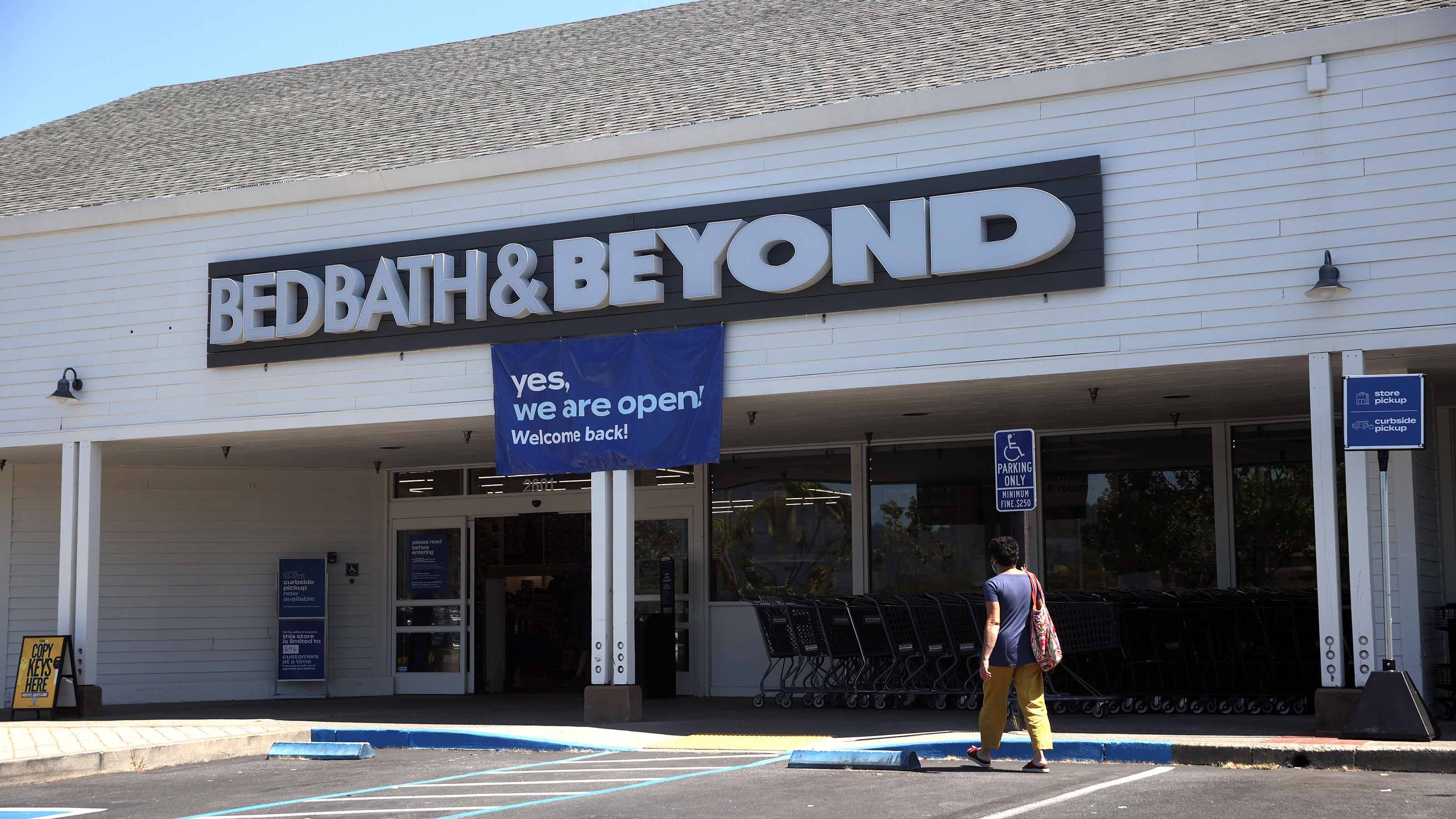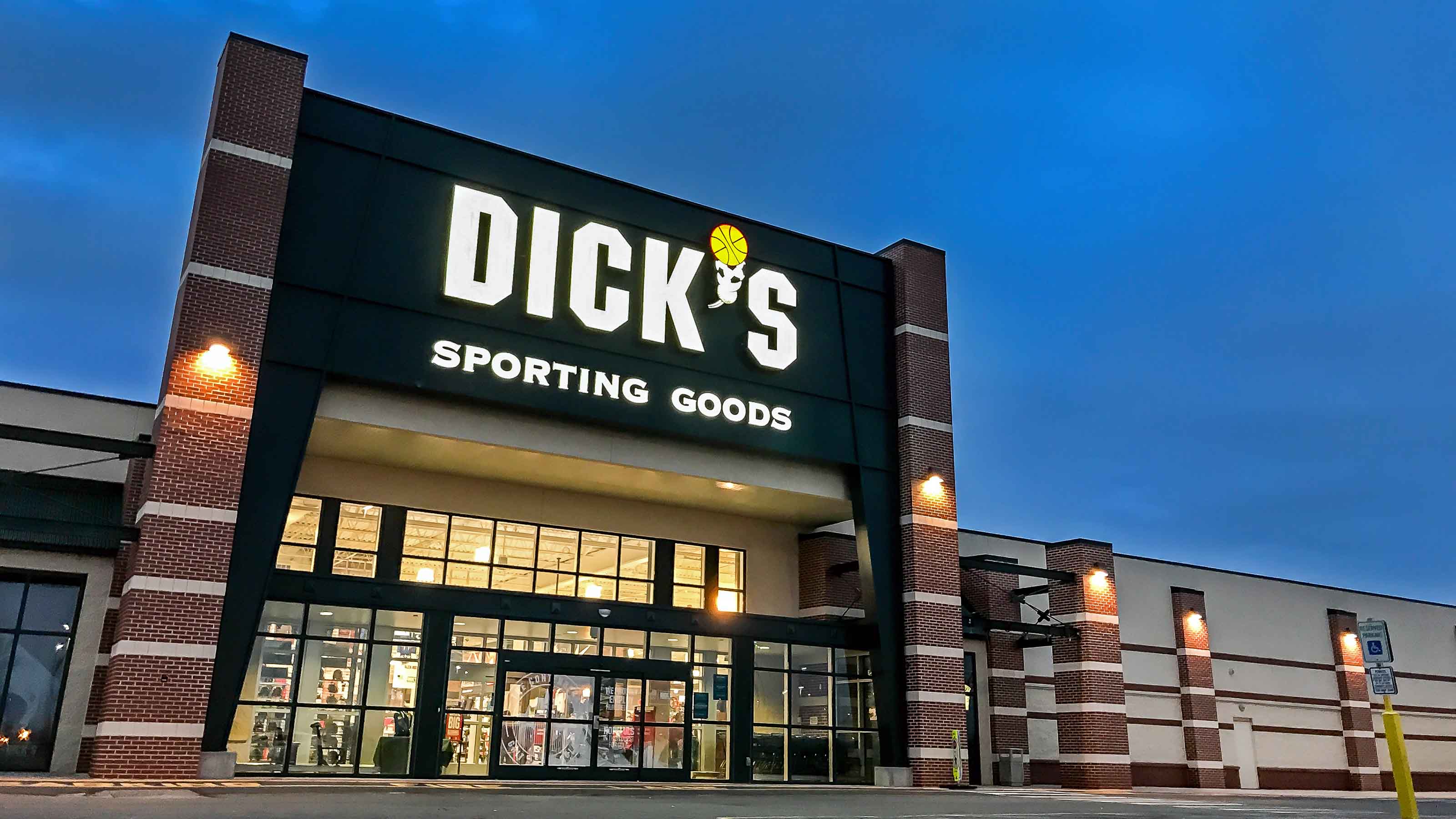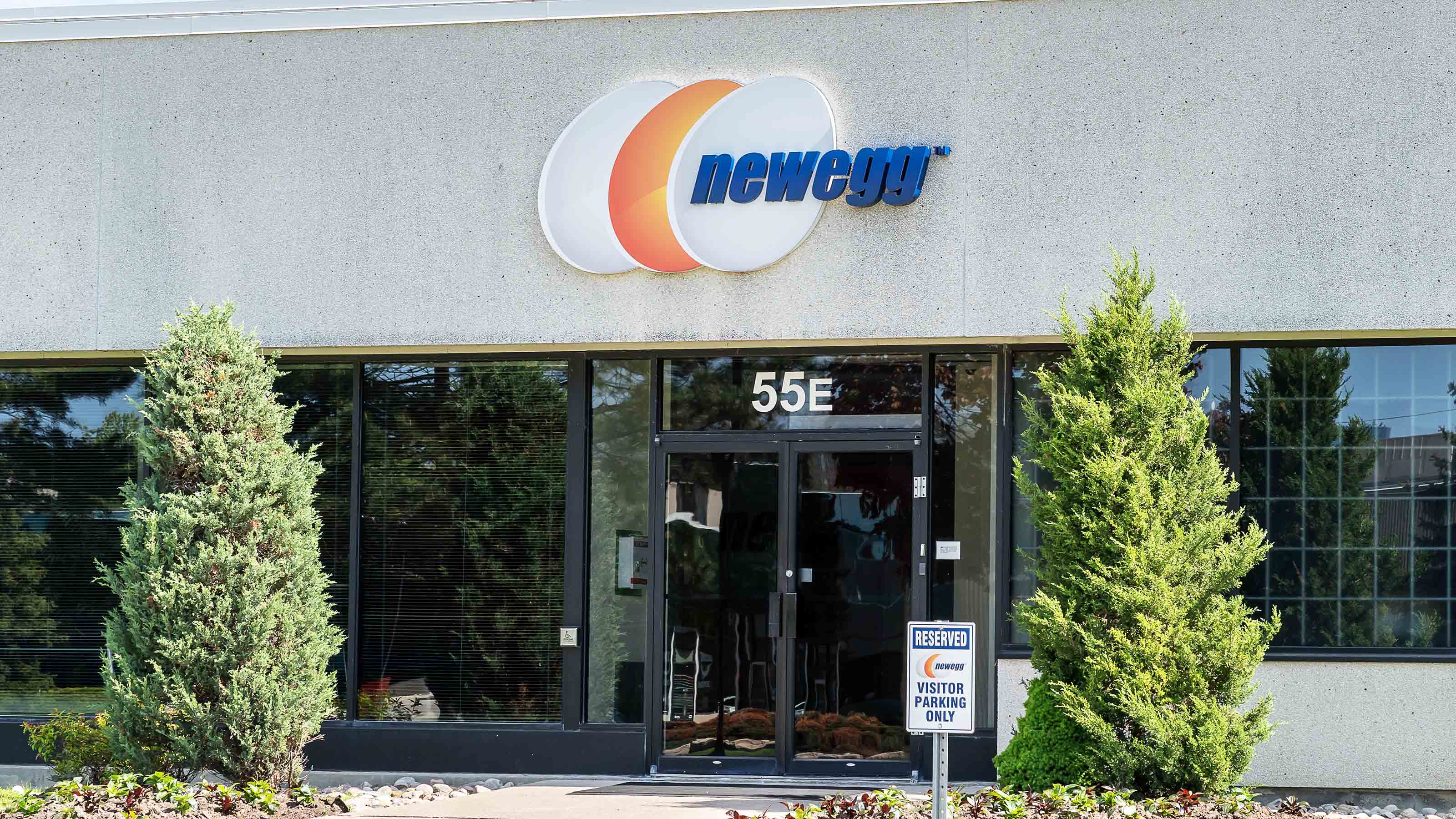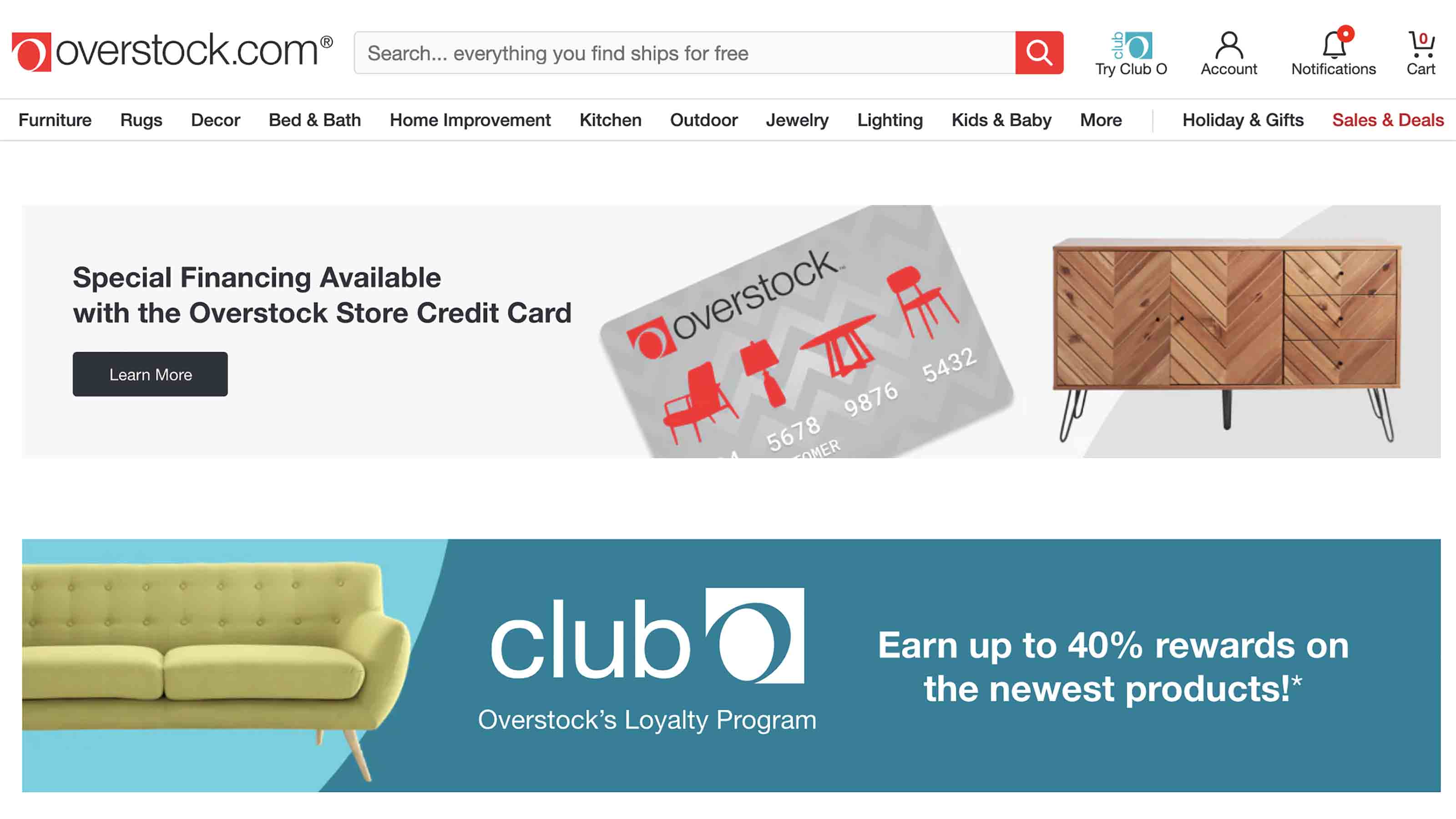13 Consumer Stocks for the Holiday Season
Investors hunting for consumer stocks can't go on an indiscriminating binge. These 13 retail picks appear to have more to offer than most of their peers.


When it comes to consumer stocks, the November-through-December holiday shopping period is crucial to their success.
And amid supply-chain disruptions and staffing shortages at many companies, it is increasingly clear that only the best retail stocks will have what it takes to navigate the challenging environment in the weeks ahead.
But while the headlines may be offering a Grinch-like feel lately for some retailers, the fact is that there is a select group of consumer stocks that are actually firing on all cylinders and looking eagerly ahead to the final weeks of the year.
With that in mind, here are 13 of the best consumer stocks to buy for the upcoming holiday season.
Many of these stocks have significantly outperformed the S&P 500 already, with either big jumps after recent earnings reports or a continued grind higher that has put their shares at or near new highs. And all of them have a lot to offer investors and should be ones to explore if you're looking for outperformance in the final months of 2021. (We also have you covered if you prefer online retail ETFs for the holiday season.)
Disclaimer
Data is as of Nov. 15. Dividend yields are calculated by annualizing the most recent payout and dividing by the share price.

Abercrombie & Fitch
- Market value: $2.7 billion
- Dividend yield: N/A
Abercrombie & Fitch (ANF, $46.16) is a retailer that was once a force to be reckoned with at American malls and high school lunchrooms.
The stock went from more than $80 per share before the 2008 financial crisis to less than $20 a share by early 2009. And though shares partially recovered as the dust settled, the bigger problem ANF faced wasn't the economic downturn but the pressures of e-commerce and changing consumer tastes.
So after a slow bleed for several years and the resulting pain of the pandemic, by late 2020, ANF stock was even lower than it had been back in 2009.
But a funny thing has happened: The brand's slow transformation that began 10 years ago in the wake of the financial crisis was kicked into high gear through this latest disruption caused by COVID-19. The result is that the prior year's loss is not just on pace to be fully erased this fiscal year but turned into a massive profit of $4.49 per share – more than the tally of all its per-share earnings since 2014 combined.
Investors bid shares up more than 15% over a two-day time span this spring as the substance of its recovery started to become clear to Wall Street following the retailer's first-quarter earnings report.
And since then, the company has made continued improvements to its operations to ensure this is not a flash in the pan. In late October, for instance, ANF announced same-day delivery plans and a major logistics hub investment in the Phoenix area to ensure it has the right infrastructure to compete digitally in both the holiday season and in years to come.

Bath & Body Works
- Market value: $19.8 billion
- Dividend yield: 0.8%
Earlier this year, the company formerly known as L Brands spun off its women's wear into the separate Victoria's Secret (VSCO) firm and renamed itself Bath & Body Works (BBWI, $74.81). BBWI will focus on home and body care products under brands including Bath & Body Works, White Barn, C.O. Bigelow and others.
The idea was to rejuvenate this business by separating it from the apparel-focused VSCO and capitalize on a recent shift to "self-care" among consumers that has led to strong spending in the toiletries, fragrance and soaps category.
Admittedly, it's always hard to tell how such a transformation is transpiring without a few years of financials instead of just a few quarters. But in the wake of the spinoff, BBWI has been doing well enough to be worthy of notice.
Specifically, in its second-quarter report back in August, it gapped up more than 10% in a single session after posting a massive 43% surge in sales and a significant profit after a quarterly loss in the year-ago period. This was a record quarter that blew away expectations, and was a clear sign Bath & Body Works is on the track to long-term success in the wake of this restructuring.
Looking forward, things will settle down and analysts are only projecting about 7% revenue growth next fiscal year. And without Victoria's Secret, there will be a lot more attention and a lot fewer excuses as time goes by.
Still, as far as consumer stocks go, the big uptrend in this one hints that Wall Street isn't expecting this turnaround story to fall flat anytime soon. Shares of BBWI are up more than 170% in the last 12 months, with no sign of slowing down as we enter the holiday shopping season.

Boot Barn Holdings
- Market value: $3.6 billion
- Dividend yield: N/A
Not familiar with the $3.6 billion "lifestyle retail" chain Boot Barn Holdings (BOOT, $121.11)? If you live in a coastal or urban area that's probably not a surprise, as the company specializes in Western-style footwear and apparel ranging from chunky belt buckles to cowboy boots to denim.
Though admittedly a niche store, the roughly 280 Boot Barn stores across 36 states serve a very lucrative segment of the U.S. retail industry. Consider some of its premium boots sell for $2,500 a pair, and iconic Stetson cowboy hats can sell for even more. Those products may not carry the same weight in Paris as they do on the prairie, but that doesn't mean there aren't plenty of customers willing to open their wallets up wide at Boot Barn all the same.
And lately, consumers are headed to BOOT in droves with a willingness to spend big time. In the current fiscal year, for instance, revenue is forecast to surge more than 50% from about $890 million last year to $1.35 billion. Earnings per share are set to explode nearly 160% on top of that, from $2.01 to a projected $5.21. No wonder shares have more than tripled in the last calendar year and are setting new 52-week highs like clockwork – making it one of the best consumer stocks out there.
Though some Wall Streeters may not be willing to spend hundreds or thousands of bucks on country fashion stylings, there's no doubt that much of America disagrees based on this performance. And as luxury retail sales tend to be much more durable than low-end transactions, where middle-class and working-class consumers are quick to pull back in tough times, there's a good chance that Boot Barn stock is just getting started with its recent success.

Crocs
- Market value: $10.4 billion
- Dividend yield: N/A
At first blush you may think that Crocs (CROX, $177.50) is just that quirky company that was a big-time fad a decade ago but almost went bust in the wake of the financial crisis. While that may be true, it misses out on the very important rejuvenation of the shoemaker in recent years
Case in point: In early 2021, CROX eclipsed its prior all-time high set way back in 2007, and has continued to set new 52-week highs over the last few months.
If you want reasons for this surge in CROX stock, look no farther than the fundamentals. In the current year, Crocs is expected to book a 65% revenue increase over fiscal 2020. And lest you think that's fueled only by a short-term rebound from pandemic lows, the company is projecting more than 20% growth next year on top of that.
From a profit perspective, things look equally impressive, with earnings per share expected to rise more than 135% from $3.22 last year to an estimated $7.59 this year – then forecast to rise another 21% to $9.18 in fiscal 2022.
When it comes to retail stocks, the strength of this one comes from its direct-to-consumer push that allows it to maintain impressive margins, as well as its continued expansion into new geographies and new products. And while its signature colorful clogs still represent the lion's share of revenue, management is pushing hard to diversify – and grow – beyond this already impressive product line.

Dick's Sporting Goods
- Market value: $11.6 billion
- Dividend yield: 1.3%
The typical story for most consumer stocks lately seems to be the lingering impact of a sales bust during the pandemic and a struggle to right themselves as the economy normalizes. But Dick's Sporting Goods (DKS, $134.44) is decidedly different, with a lot of success to speak of despite challenges for its peers.
DKS operates a fiscal year ahead of the calendar year, so the fact that its 2021 revenue was up almost 10% during the disruptions of calendar 2020 is a huge win for the company. Furthermore, projections for the current fiscal year of 2022 show Dick's accelerating even more, with projected 23% revenue expansion and profits set to roughly double over the prior year.
The reasons for this are multifaceted. Firstly, Dick's benefits from being in a retail segment that thrived during the pandemic as folks looked to get outdoors and loaded up on gear like hiking boots and golf equipment to do so.
Secondly, Dick's had already invested in its "omnichannel" operations that allow people to book sales online and either have items delivered to their home or picked up the same day in stores.
And last but not least, this short-term tailwind is proving durable as total e-commerce remains at nearly 20% of total revenue even after the instant pandemic-driven bump – and likely will grow further in the coming years as this shift in consumer behavior becomes widespread and permanent for.
With a dominant presence in the sport goods category, a segment of retail that is sometimes more insulated from e-commerce competition as shoppers like to try on athletic wear or feel the heft of a softball bat in person, Dick's is a stock to watch this all-important holiday season.

Dillard's
- Market value: $6.8 billion
- Dividend yield: 0.2%
For those unfamiliar with Arkansas-based Dillard's (DDS, $342.13), the company was founded in the 1930s and operates roughly 300 retail department stores in the South and Midwest.
Admittedly, it's not the kind of business that has done particularly well lately amid the rise of e-commerce and recent coronavirus disruptions. For instance, evenue had already stagnated, fading slightly from $6.4 billion in fiscal 2017 to $6.3 billion in fiscal 2020, before taking a sharp dive to $4.4 billion in fiscal 2021 that ended in January of this year. That is decidedly bad news for any publicly traded stock and DDS stock took a big hit as a result.
So why is Dillard's on this list of best consumer stocks?
Well, things have stabilized lately now that the economy is opening up again and both investors and Dillard's management team have been forced to reset their expectations after shares plummeted from around $140 at their mid-2015 highs to a pandemic-era low in the $20 range. Now, shares have surged up above $350 on hopes that the company is finally on the right track – and just in time for an important holiday shopping season.
Analysts are expecting Dillard's to swing to a huge profit after last year's operating loss, and see top-line revenue surging to $6.5 billion if projections hold.
It's out of the norm to expect a largely brick-and-mortar company like DDS to emerge from the pandemic actually stronger than when it went in, but the crisis forced store closures and a focus on higher margins that has helped transform this otherwise old-school stock.

eBay
- Market value: $46.5 billion
- Dividend yield: 1.0%
An old favorite among e-commerce bulls, eBay (EBAY, $74.21) is much more than just the online auction site that it used to be way back in the late 1990s. Its platforms do still support the garage-sale crowd and bargain hunters, but they also support direct retailers, liquidators, wholesales, import and export companies and much more.
Despite an already impressive scale with $10 billion in annual sales across these channels, eBay continues to enjoy incremental revenue growth. But what's really impressive isn't the single-digit sales expansion but the massive profitability it sees as third-party buyers and sellers do most of the work. For instance, earnings per share are set to expand 16% this fiscal year and another 14% in fiscal 2022. This growth adds to the brisk performance of eBay in 2020 that was driven by stuck-at-home shoppers during the pandemic.
The reason for this success is deceptively simple: EBAY is building on its historic roots to offer a smaller and more personalized feel, catering to collectors and hobbyists and specialists in a way that behemoths like Amazon.com (AMZN) or Alibaba Group (BABA) either can't or won't.
Consider its recent push into factory-refurbished products, where it offers a warranty and curated experience to build confidence among consumers as it offers deals. In this age where fake products and fake reviews abound on many major e-commerce portals, this is a great idea.
Additionally, EBAY has deployed its specialized auction know-how to enter heavy-equipment resales via a strategic partnership with Bidadoo. The used heavy machinery market in the U.S. is estimated to be between $50 billion and $60 billion.
Sure, eBay may never be able to convince shoppers it is the go-to place for a new 4K TV or books or sneakers. But catering to bargain-conscience shoppers looking for quality used products or niche goods? That's in this Silicon Valley icon's DNA – and in 2021, this strategy is not just fending off Amazon, but helping eBay continue to build on its past successes as one of the best retail stocks around.

Newegg Commerce
- Market value: $7.1 billion
- Dividend yield: N/A
Newegg Commerce (NEGG, $19.21) has roughly $7 billion in market value and is one of the founding fathers of the "build your own PC" movement. NEGG has been around since 2001 selling computer components and other consumer tech hardware via its e-commerce platform. Thanks to a strong brand and loyal customers, the company has managed to expand over the years into a truly global e-tailer that serves the U.S., Europe, South America and Asia.
You may think there's no place for PCs in a mobile age, but the truth is that devices have simply become more specialized.
There are your typical mobile devices, the mundane laptops standard at the workplace and school, and then "everything else" that requires a computer. Newegg thrives in this latter category by providing high-quality video cards to serious gamers and graphic designers, studio quality hardware for audiophiles and musicians and all the custom memory and performance solutions that tech-savvy people want to upgrade above the typical run-of-the-mill Dell machine.
Needless to say, the COVID-induced work-from-home craze and the supercharged gig economy have benefited Newegg thanks to its specialization.
In August, NEGG reported that it had seen a 40% year-over-year increase in net sales and a 14% rise in the first half of the year – proving this tech retailer hasn't slowed in 2021. While supply-chain disruptions remain a challenge for consumer stocks as we enter the final months of the year, NEGG seems to be navigating the waters just fine.

Overstock.com
- Market value: $4.6 billion
- Dividend yield: N/A
While some consumers may only know the $4.6-billion e-commerce portal Overstock.com (OSTK, $106.89) as an online discounter, more active traders will know that this company has been a pretty volatile and quirky investment over the last few years. Consider it went from a 2017 high of almost $80 a share to less than $7 a share by late 2019 as it struggled to turn a profit and faced anemic sales growth when compared with other online competitors.
Or more recently, Overstock introduced a "digital dividend" in 2020 as part of its big push into the cryptocurrency and blockchain arena. Shareholders were given one digital share of the OSTKO blockchain-based security token for every 10 shares of common stock they held.
Some of that volatility admittedly remains. However, after Overstock announced in January that its blockchain-focused subsidiary Medici Ventures will be spun out on its own into a limited partnership fund, pending legal and regulatory approval, it appears less of the crypto-related hype will pervade the stock.
And with its core e-commerce engine doing pretty well right now, this could be the moment OSTK gets its groove back as one of the go-to retail stocks in a digital age.
In both the current fiscal year and the next one, revenue for Overstock.com is expected to grow at least 11%. And earnings per share are projected to almost double in fiscal 2021 before tacking on an additional 25% in growth in fiscal 2022. This gives some strong fundamentals to back up the recent narrative of success.
It's not uncommon to still see big swings in OSTK stock, but lately the moves have been higher. Thanks to a strong push after the company reported higher-than-expected third-quarter EPS at the end of October, shares are now trading at levels not seen since August 2020.
If the momentum keeps up, it could be off to the races for Overstock as we close out the year and enter 2022.

Revolve Group
- Market value: $6.1 billion
- Dividend yield: N/A
Revolve Group (RVLV, $83.48) is an online fashion retailer known for its FWRD e-commerce portal as well as its namesake Revolve brand. It operates a global platform that brings in emerging and established third-party brands as well its own in-house clothing.
Surf the Revolve websites and it's clear right away the kind of consumer it is catering to – young, female and willing to spend big bucks. And one thing that has always proven durable in any economic environment is the enthusiasm of young, affluent women to spend freely on the latest fashions.
What's interesting about RVLV, however, is that it has forgone the typical brick-and-mortar approach of established luxury fashion stores and has scaled up quickly with its online-only approach. This has allowed for a host of benefits, including better margins and the potential to compete both on price and availability. Given its structure, Revolve can stock a much wider array of fashions from a diverse cast of designers to ensure it is always en vogue.
The success of this strategy shows up in the numbers, with revenue set to jump more than 50% this fiscal year and another 22% next year. Profits are also ticking steadily higher, set to rise 32% from 79 cents in earnings per share in fiscal 2020 to $1.04 per share this year. And for fiscal 2022, earnings are projected to rise another 15% to $1.23 per share, according to recent forecasts.
Fashion is fickle, but the agile and digital-friendly model of Revolve seems to be connecting big with consumers right now. And based on recent share performance, with RVLV stock up more than 300% in the last 12 months, Wall Street seems confident this is one of the best retail stocks to believe in this holiday season.

Signet Jewelers
- Market value: $5.4 billion
- Dividend yield: 0.7%
Consumers will recognize many of the nameplates operating under the Signet Jewelers (SIG, $101.65) corporate parent, including Kay Jewelers, Jared, Zales and Piercing Pagoda to name a few.
The luxury goods sector is very much dependent on consumer spending trends, and this could portend good things for SIG given wealthy and COVID-weary shoppers are even more eager to spend than before. It also doesn't hurt that all those delayed weddings and engagements due social distancing has resulted in a nice tailwind for 2021 ring sales.
As prelude to what may be in store during the holiday season, Signet's quarterly earnings report in September topped expectations and sparked a 6% run in a single day after strong numbers and encouraging forward guidance. Specifically, that report was for the company's second-quarter of fiscal 2022 and featured news that sales more than doubled year-over-year and SIG raised its full-year same-store-sales guidance to 30% to 33% expansion compared with prior forecasts of 24% to 27% growth.
Certain consumer stocks are facing uncertainty right now because of supply-chain issues or pricing pressures, but the jewelry business is largely insulated from these trends. In fact, some consumers are drawn to gold, platinum and diamonds in inflationary environments because of the potential that these materials will actually be worth more in the long run. All of these trends add up to what looks like a strong chance of success for SIG in the weeks ahead.

Tempur Sealy International
- Market value: $8.7 billion
- Dividend yield: 0.8%
When people started spending more time at home because of the pandemic, one of the first things they did was evaluate the furniture they were spending more time around. And since most people spend a third or more of their life in bed, it's no surprise that Tempur Sealy International (TPX, $45.19) was one of the companies that benefited from this trend. The firm has a broad array of bedding and mattress brands including Sleep Outfitters, Tempur-Pedic, Sealy, Comfort Revolution and Stearns & Foster.
But in 2021, TPX is decidedly not a story about people laying in bed during the gloomy days of the pandemic. Case in point: In July, Tempur Sealy stock popped roughly 15% in a single session back in July thanks to a standout earnings report. Specifically, TPX said operating income jumped 318% over Q2 2020 and hiked its quarterly dividend 29% to ensure shareholders got their piece of that strong performance.
Temper Sealy's third-quarter numbers weren't quite as jaw-dropping, but featured a 20% year-over-year sales bump and a 39% increase in net income to show the stock is still going very strong.
Shares have risen almost 70% so far this year on a solid performance. And while there is certainly no shortage of mattress-by-mail competitors, this year-to-date return is plenty of proof that TPX is fending them off with its broad distribution network and doorstep delivery that allows folks to try its products without ever setting foot into a store.
With shares hitting new all-time highs after this recent run, investors have good reason to think that TPX stock will stay strong through the holiday season.

Williams-Sonoma
- Market value: $15.8 billion
- Dividend yield: 1.3%
Williams-Sonoma (WSM, $212.00) is the operator of a few dominant upscale houseware brands, including the Pottery Barn, West Elm and its Williams-Sonoma namesake among others. And thanks to the "nesting" trend prompted by the pandemic and the rise of semi-permanent telework, luxury furniture and kitchenware has been a tremendous segment to be in lately.
But the appeal of WSM goes beyond its niche or short-term trends. The retailer invested years ago in a multi-platform sales approach that included same-day online purchasing and in-store pickups well before COVID-19 prompted its competitors to play catch up.
Another big plus: Unlike cash-strapped competitors, WSM opted to pay brick-and-mortar staff across pandemic-related closures in 2020. This helped its loyal cashiers and warehouse staff remain on the payroll and be ready to ramp up operations this holiday season.
And it recently doubled down on investing in its rank and file by increasing its minimum wage to $15 an hour, too. That kind of compassionate corporate culture is increasingly in demand among managers and senior staff and will pay dividends for this company for years to come as it retains and attracts talent beyond those just stocking shelves this December.
The icing on the cake is that all this news and narrative is only the tip of the iceberg. The real heft of WSM stock comes in its numbers, with current fiscal year profits set to hit $13.60 per share – up 50% from the $9.04 per share it earned the year prior – with revenue set to spike 20%.
Share momentum is equally impressive, with new 52-week highs being set like clockwork and WSM sitting on a 117.3% gain for the year-to-date.
With a combination of strong management, impressive growth and a solid niche within retail, this is one of the best consumer stocks that could continue to knock it out of the park in the coming months.
Get Kiplinger Today newsletter — free
Profit and prosper with the best of Kiplinger's advice on investing, taxes, retirement, personal finance and much more. Delivered daily. Enter your email in the box and click Sign Me Up.

Jeff Reeves writes about equity markets and exchange-traded funds for Kiplinger. A veteran journalist with extensive capital markets experience, Jeff has written about Wall Street and investing since 2008. His work has appeared in numerous respected finance outlets, including CNBC, the Fox Business Network, the Wall Street Journal digital network, USA Today and CNN Money.
-
 2026 Disney Dining Plan Returns: Free Dining for Kids & Resort Benefits
2026 Disney Dining Plan Returns: Free Dining for Kids & Resort BenefitsPlan your 2026 Walt Disney World vacation now. Learn about the returning Disney Dining Plan, how kids aged three to nine eat free, and the exclusive benefits of staying at a Disney Resort hotel.
By Carla Ayers
-
 How Can Investors Profit From AI's Energy Use?
How Can Investors Profit From AI's Energy Use?Global energy demand is expected to grow by leaps and bounds over the next several years as AI usage accelerates. Here's how to get a piece of the pie.
By Jacob Schroeder
-
 Stock Market Today: Dow Drops 971 Points as Powell Pressure Ramps Up
Stock Market Today: Dow Drops 971 Points as Powell Pressure Ramps UpPresident Trump is increasing his attacks against Jerome Powell, insisting the Fed chair cut interest rates.
By Karee Venema
-
 Stock Market Today: No 'Powell Put'? No Problem
Stock Market Today: No 'Powell Put'? No ProblemInvestors, traders and speculators look beyond both another Trump post and more signs of slowing economic activity.
By David Dittman
-
 Stock Market Today: Dow Drops 699 Points After Powell Speech
Stock Market Today: Dow Drops 699 Points After Powell SpeechFed Chair Powell warned of a slowing economy and higher inflation but said the central bank isn't ready to cut rates just yet.
By Karee Venema
-
 Stock Market Today: Stocks Struggle Amid Tariff Uncertainty
Stock Market Today: Stocks Struggle Amid Tariff UncertaintyBoeing dropped after China suspended new aircraft orders, while Bank of America and Citi climbed on earnings beats.
By Karee Venema
-
 Stock Market Today: Stocks Gain on Tech, Auto Tariff Talk
Stock Market Today: Stocks Gain on Tech, Auto Tariff TalkThe Trump administration said late Friday that it will temporarily halt tariffs on some Chinese tech imports.
By Karee Venema
-
 Stock Market Today: Stocks Surge to Close a Volatile Week
Stock Market Today: Stocks Surge to Close a Volatile WeekIt was another day with a week's worth of both news and price action, but it ended on a strongly positive note.
By David Dittman
-
 Stock Market Today: Uncertainty Proliferates: Dow Loses 1,014 Points
Stock Market Today: Uncertainty Proliferates: Dow Loses 1,014 PointsWeaker-than-expected consumer inflation data wasn't enough to stabilize sentiment during another volatile day for financial markets.
By David Dittman
-
 Stock Market Today: Tariff Pause Triggers 3,000-Point Dow Rally
Stock Market Today: Tariff Pause Triggers 3,000-Point Dow RallyThe bond market is sending concerning signals as the Trump administration executes its rapid reordering of global trade relationships.
By David Dittman
